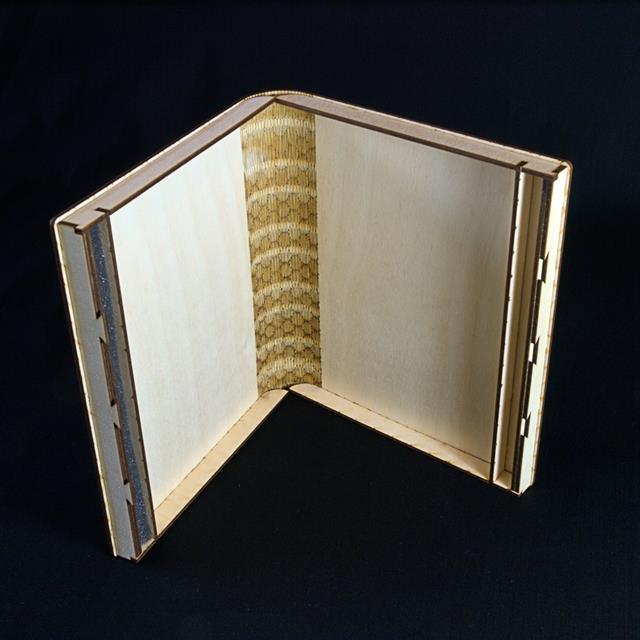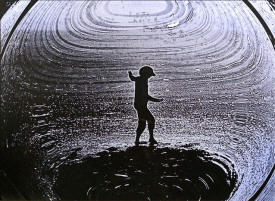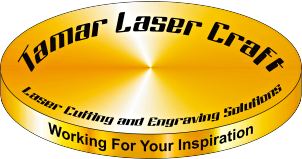Updated:
18 January 2015

 Raster Image Engraving
We can handle pretty well any imaging file .JPG,
.TIFF etc.
Image Suitability
As a guide, photo images should
be sharp, detailed, well lit and have good definition,
with a reasonable degree of contrast. Avoid dark
images, night shots and low contrast images.
Bare in mind that producing a high resolution
photo engraving or etching requires an image resolution
of around 300dpi.
We adjust your image for
best engraving results but the final result depends
very much upon the quality of the original, so please let us have a sample copy of your proposed
image so that we can assess its suitability.
We can work with almost any image files but bear in mind
that the better the quality of the engarving is
determined by the quality will be the original artwork.
For us to calculate a price for engraving, we need to
know the size of the engraving, the type of material to
be engraved and the resolution of the original image or
graphic.
If you are supplying an object to be engraved, let us know what it is made of and the dimensions.
We can work on objects up to 10.5" (267mm) tall and
cylindrical items up to 4" (100mm) diameter by 12"
(305mm) in length.
What quantity do you require?
Costs vary depending on the volume of an order so
we need to know the quantity you require to enable us to
quote accordingly.
What is your deadline for your project?
Finally, please
understand that it is vital that we have the above
information.
It is not
possible to price your work without it.
Full contact details
Your name, company name (if applicable), email address and most importantly your telephone number so we can contact you with any questions we might have about your
project.
Delivery or collection?
If you are locally based, you are welcome to collect. If
you are further afield, let us know your full delivery address
and we will dispatch your project safely to you.
You can
find a Guide To Our Pricing Structure here
If you require more information or you would like us to
assist in any way, you can
contact us here
If, like us, you still have some old fashioned
tendencies, we are quite comfortable receiving
communications by post or even horse and messenger. See our
Contact information here.
Raster Image Engraving
We can handle pretty well any imaging file .JPG,
.TIFF etc.
Image Suitability
As a guide, photo images should
be sharp, detailed, well lit and have good definition,
with a reasonable degree of contrast. Avoid dark
images, night shots and low contrast images.
Bare in mind that producing a high resolution
photo engraving or etching requires an image resolution
of around 300dpi.
We adjust your image for
best engraving results but the final result depends
very much upon the quality of the original, so please let us have a sample copy of your proposed
image so that we can assess its suitability.
We can work with almost any image files but bear in mind
that the better the quality of the engarving is
determined by the quality will be the original artwork.
For us to calculate a price for engraving, we need to
know the size of the engraving, the type of material to
be engraved and the resolution of the original image or
graphic.
If you are supplying an object to be engraved, let us know what it is made of and the dimensions.
We can work on objects up to 10.5" (267mm) tall and
cylindrical items up to 4" (100mm) diameter by 12"
(305mm) in length.
What quantity do you require?
Costs vary depending on the volume of an order so
we need to know the quantity you require to enable us to
quote accordingly.
What is your deadline for your project?
Finally, please
understand that it is vital that we have the above
information.
It is not
possible to price your work without it.
Full contact details
Your name, company name (if applicable), email address and most importantly your telephone number so we can contact you with any questions we might have about your
project.
Delivery or collection?
If you are locally based, you are welcome to collect. If
you are further afield, let us know your full delivery address
and we will dispatch your project safely to you.
You can
find a Guide To Our Pricing Structure here
If you require more information or you would like us to
assist in any way, you can
contact us here
If, like us, you still have some old fashioned
tendencies, we are quite comfortable receiving
communications by post or even horse and messenger. See our
Contact information here.
Requesting a Quotation For Laser Cutting & Engraving Services

Information That We Require About Your Project
Material To assist with the choice of materials, provide an idea of what you are making: e.g. is it for display, jewellery, a prototype, model making, a production jig or brand logo etc. What materials / thicknesses you would like to use? Would you like us to supply material or would you prefere to use your own material (Provided your material is suitable for laser work)? File Types Vector Files for Cutting We send DFX, or CDR files to the laser machine and we can convert from other file formats. See our Quick Guide For users of Adobe Illustrator please see our specific guidance here which will also be of interest to users of other graphics software. The laser operates at different power and speed combinations, according to the material being used and its thickness, along with the nature of cut being employed, cut right through or different rates of partial cut or scoring, plus any engraving areas. In order to price your proposed project we need to find the total length of all line types and assess the time it will take the laser to complete the various tasks. Where there are any engraving areas, we have to find the total area and, along with the resolution, calculate the total engraving time. This is done by running your files through our simulation software, a process which also indicates any possible problem areas, such as double underlying lines or engraving areas whose perimeters are not enclosed by a continuous closed path. More information here If your 2D drawings have been extracted from an original 3D drawing there is a high possibility that there will be multiple underlying lines. While we are able to detect most of them, we will not necessarily know which line is the valid one. So it is advisable to check for any underlying lines. Please save your 2D drawings with the 'Construction Layers' turned off. Construction lines can cause many random lines anywhere within the drawing. Conversion to DXF and SVG files can cause an anomaly of scale. Please place a 25mm x 25mm square just outside the drawing area so that we can check and rectify any possible scaling errors. You may provide PDF files for costing purposes but these should be created by your drawing software and they should be unlocked so that we can extract the drawing and run it through our simulation software to estimate processing times. Drawing service We are able to produce drawings for you, from a detailed, anotated sketch. Raster Image Engraving
We can handle pretty well any imaging file .JPG,
.TIFF etc.
Image Suitability
As a guide, photo images should
be sharp, detailed, well lit and have good definition,
with a reasonable degree of contrast. Avoid dark
images, night shots and low contrast images.
Bare in mind that producing a high resolution
photo engraving or etching requires an image resolution
of around 300dpi.
We adjust your image for
best engraving results but the final result depends
very much upon the quality of the original, so please let us have a sample copy of your proposed
image so that we can assess its suitability.
We can work with almost any image files but bear in mind
that the better the quality of the engarving is
determined by the quality will be the original artwork.
For us to calculate a price for engraving, we need to
know the size of the engraving, the type of material to
be engraved and the resolution of the original image or
graphic.
If you are supplying an object to be engraved, let us know what it is made of and the dimensions.
We can work on objects up to 10.5" (267mm) tall and
cylindrical items up to 4" (100mm) diameter by 12"
(305mm) in length.
What quantity do you require?
Costs vary depending on the volume of an order so
we need to know the quantity you require to enable us to
quote accordingly.
What is your deadline for your project?
Finally, please
understand that it is vital that we have the above
information.
It is not
possible to price your work without it.
Full contact details
Your name, company name (if applicable), email address and most importantly your telephone number so we can contact you with any questions we might have about your
project.
Delivery or collection?
If you are locally based, you are welcome to collect. If
you are further afield, let us know your full delivery address
and we will dispatch your project safely to you.
You can
find a Guide To Our Pricing Structure here
If you require more information or you would like us to
assist in any way, you can
contact us here
If, like us, you still have some old fashioned
tendencies, we are quite comfortable receiving
communications by post or even horse and messenger. See our
Contact information here.
Raster Image Engraving
We can handle pretty well any imaging file .JPG,
.TIFF etc.
Image Suitability
As a guide, photo images should
be sharp, detailed, well lit and have good definition,
with a reasonable degree of contrast. Avoid dark
images, night shots and low contrast images.
Bare in mind that producing a high resolution
photo engraving or etching requires an image resolution
of around 300dpi.
We adjust your image for
best engraving results but the final result depends
very much upon the quality of the original, so please let us have a sample copy of your proposed
image so that we can assess its suitability.
We can work with almost any image files but bear in mind
that the better the quality of the engarving is
determined by the quality will be the original artwork.
For us to calculate a price for engraving, we need to
know the size of the engraving, the type of material to
be engraved and the resolution of the original image or
graphic.
If you are supplying an object to be engraved, let us know what it is made of and the dimensions.
We can work on objects up to 10.5" (267mm) tall and
cylindrical items up to 4" (100mm) diameter by 12"
(305mm) in length.
What quantity do you require?
Costs vary depending on the volume of an order so
we need to know the quantity you require to enable us to
quote accordingly.
What is your deadline for your project?
Finally, please
understand that it is vital that we have the above
information.
It is not
possible to price your work without it.
Full contact details
Your name, company name (if applicable), email address and most importantly your telephone number so we can contact you with any questions we might have about your
project.
Delivery or collection?
If you are locally based, you are welcome to collect. If
you are further afield, let us know your full delivery address
and we will dispatch your project safely to you.
You can
find a Guide To Our Pricing Structure here
If you require more information or you would like us to
assist in any way, you can
contact us here
If, like us, you still have some old fashioned
tendencies, we are quite comfortable receiving
communications by post or even horse and messenger. See our
Contact information here.





